
Odisha, formerly Orissa, is an Indian state located in Eastern India. It is the 8th largest state by area, and the 11th largest by population. The state has the third largest population of Scheduled Tribes in India. It neighbours the states of Jharkhand and West Bengal to the north, Chhattisgarh to the west, and Andhra Pradesh to the south. Odisha has a coastline of 485 kilometres (301 mi) along the Bay of Bengal in Indian Ocean. The region is also known as Utkala and is mentioned by this name in India's national anthem, "Jana Gana Mana". The language of Odisha is Odia, which is one of the Classical Languages of India.

Bhubaneswar is the capital and largest city of the Indian state of Odisha. The region, especially the old town, was historically often depicted as Chakra Kshetra and Ekamra Kshetra. Bhubaneswar is dubbed the "Temple City", a nickname earned because of the 700 temples which once stood there. In contemporary times, it has emerged as an education hub and an attractive business destination.

Cuttack in Odia, is the former capital and the second largest city in the Indian state of Odisha. It is the headquarters of the Cuttack district. The name of the city is an anglicised form of the Odia and Sanskrit name Kataka which literally means The Fort, a reference to the ancient Barabati Fort around which the city initially developed. Cuttack is known as the Millennium City as well as the Silver City due to its history of 1000 years and famous silver filigree works. The Orissa High Court is located there. It is the commercial capital of Odisha which hosts many trading and business houses in and around the city. Cuttack is famous for its Durga puja which is one of the most important festivals of Odisha. Cuttack is also the birthplace of Netaji Subhas Chandra Bose. The city is categorised as a Tier-II city as per the ranking system used by Government of India.
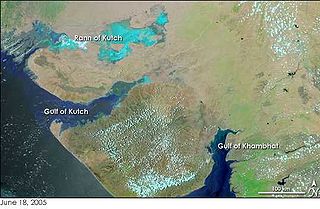
Indian maritime history begins during the 3rd millennium BCE when inhabitants of the Indus Valley initiated maritime trading contact with Mesopotamia. As per Vedic records, Indian traders and merchants traded with the far east and Arabia. During the Maurya Empire, there was a definite "naval department" to supervise the ships and trade. At the end of 1st century BCE Indian products reached the Romans during the rule of Augustus, and the Roman historian Strabo mentions an increase in Roman trade with India following the Roman annexation of Egypt. As trade between India and the Greco-Roman world increased, spices became the main import from India to the Western world, bypassing silk and other commodities. Indians were present in Alexandria while Christian and Jewish settlers from Rome continued to live in India long after the fall of the Roman Empire, which resulted in Rome's loss of the Red Sea ports, previously used to secure trade with India by the Greco-Roman world since the Ptolemaic dynasty. The Indian commercial connection with Southeast Asia proved vital to the merchants of Arabia and Persia during the 7th–8th century. A study published in 2013 found that some 11 percent of Australian Aboriginal DNA is of Indian origin and suggests these immigrants arrived about 4,000 years ago, possibly at the same time dingoes first arrived in Australia.
The Odia (ଓଡ଼ିଆ), formerly spelled Oriya, are an Indo-Aryan ethnic group native to the Indian state of Odisha who speak the Odia language. They constitute a majority in the eastern coastal state, with significant minority populations in neighboring Andhra Pradesh, Chhattisgarh, Jharkhand and West Bengal.
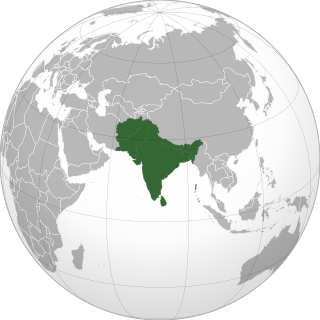
Human history in Odisha begins in the Lower Paleolithic era, as Acheulian tools dating to the period have been discovered in various places in the region. The early history of Odisha can be traced back to the mentions found in ancient texts like the Mahabharata, Maha Govinda Sutta and some Puranas.The region was also known to other kingdoms in region of East Indies due to maritime trade relations.
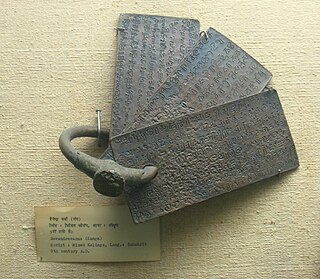
The Kalinga script or Southern Nagari is a Brahmic script used in the region of what is now modern-day Odisha, India and was primarily used to write Odia language in the inscriptions of the kingdom of Kalinga which was under the reign of early Eastern Ganga dynasty. By the 12th century, with the defeat of the Somavamshi dynasty by the Eastern Ganga monarch Anantavarman Chodaganga and the subsequent reunification of the Trikalinga(the three regions of ancient Odra- Kalinga, Utkala and Dakshina Koshala) region, the Kalinga script got replaced by the Siddhaṃ script-derived Proto-Oriya script which became the ancestor of the modern Odia script.

Bāli Jātrā, pronounced [bali dʒat̪ɾa], is the major Boita Bandana festival held at Cuttack on Kartik Purnima. It is considered to be one of Asia's largest open trade fair. The festival is held in Odisha, in the city of Cuttack at Gadagadia Ghata of the Mahanadi river, to mark the day when ancient Sadhabas would set sail to distant lands of Bali, as well as Java, Sumatra, Borneo, and Sri Lanka for trade and cultural expansion. To commemorate this, the festival is celebrated every year from the day of Kartika Purnima according to the Odia calendar.
Sadhabas were ancient mariners from the Kalinga region, which roughly corresponds to modern Odisha, India. They used ships called Boitas to travel to distant lands such as South-East Asia to carry out trade.

The Eastern Ganga dynasty also known as Purba Gangas, Rudhi Gangas or Prachya Gangas were a large medieval era Indian royal Hindu dynasty that reigned from Kalinga from as early as the 5th century to the mid 20th century. Eastern Gangas ruled much of the modern region of Odisha in three different phases by the passage of time, known as Early Eastern Gangas (493–1077), Imperial Eastern Gangas (1077–1436) and Khemundi Gangas (1436–1947). They are known as "Eastern Gangas" to distinguish them from the Western Gangas who ruled over Karnataka. The territory ruled by the dynasty consisted of the whole of the modern-day Indian state of Odisha, as well as major parts of north Andhra Pradesh, parts of Chhattisgarh and some southern districts of West Bengal. Odia language got official status in their regime following the evolution of the language from Odra Prakrit. The early rulers of the dynasty ruled from Dantapuram; the capital was later moved to Kalinganagara, and ultimately to Kataka and then to Paralakhemundi.
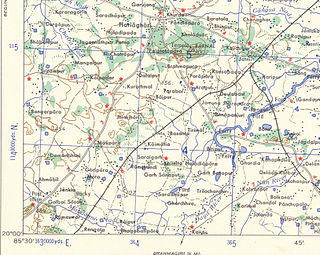
Golabai Sasan is a village in Khurda District, Odisha, India at 20°1′21″N85°33′0″E.

Kartika Purnima is a Hindu, Sikh and Jain cultural festival that is celebrated on Purnima, the 15th lunar day of the month of Kartika. It falls in November or December of the Gregorian calendar and is also known as Tripurari Purnima or Deva-Deepawali, the gods' festival of lights. Karthika Deepam is a related festival that is celebrated in South India and Sri Lanka on a different date.

Baitāḷa deuḷa or Vaitāḷa deuḷa is an 8th-century Hindu temple of the typical Khakara style of the Kalinga architecture dedicated to Goddess Chamunda located in Bhubaneswar, the capital city of Odisha, India. It is also locally known as Tini-mundia deula due to the three spires on top of it, a very distinct and unusual feature. The three spires are believed to represent the three powers of the goddess Chamunda - Mahasaraswati, Mahalakshmi and Mahakali.
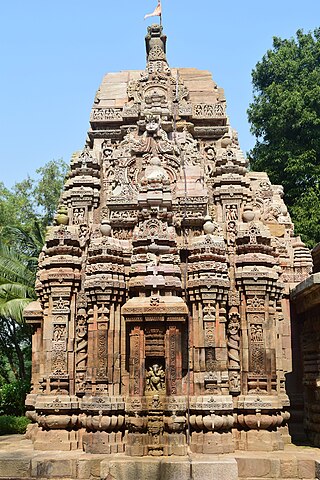
Barahi Deula is an ancient 9th century built temple situated on the eastern coast of Odisha in Puri district, India. The barahi temple of Chaurasi is unique in more than one way. The image enshrined in this temple is considered to be one of the masterpieces among the images of the deity found all over India.

The Maritime history of Odisha, known as Kalinga in ancient times, started much before 800 BC according to early sources. The people of this region of eastern India along the coast of the Bay of Bengal sailed up and down the Indian coast, and travelled to Indo China and throughout Maritime Southeast Asia, introducing elements of their culture to the people with whom they traded. The 6th century Manjusrimulakalpa mentions the Bay of Bengal as Kalingodra and in ancient Classical India, the Bay of Bengal was known as Kalinga Sagar, indicating the importance of Kalinga in the maritime trade. The old traditions are still celebrated in the annual Boita Bandana festival including its major celebration at Cuttack on the banks of Mahanadi river called Bali Jatra, and are held for seven days in October-November at various coastal districts, most famous at Cuttack though.
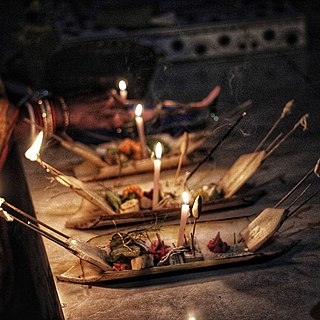
Boita Bandāna also known as Dangā Bhasā, is a traditional Odia maritime and naval festival celebrated annually throughout Odisha, India. The name could be translated as "to float ritual boats and worshipping with lighted lamp" and comes from the tradition of making decorated boats, which are then floated on a river as a symbolic gesture of their ancestors' voyage.
Chelitalo was an important port in Ancient Odisha, in northeast India, lying on the Chandrabhaga river in Konark. In ancient times, the Chandrabhaga and Kushabhadra rivers were navigable, and may have been used for the shipping of huge blocks of stone for the construction of the Konark Sun Temple.
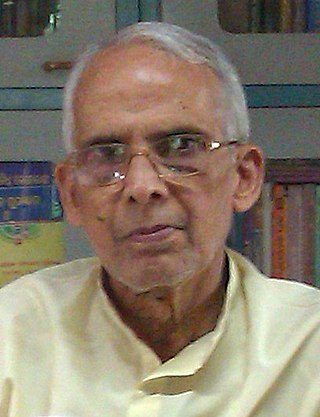
Brajanath Ratha was an Indian poet who wrote in Odia. Brajanath Ratha is internationally recognised and is the recipient of many prestigious awards like the Odisha Sahitya Academy Award, Vishuba Award, Gokarnika Award, First Shudramuni Sahitya Award and Honoured by South Korea's Ambassador, from Global Cooperation Society International, Seol, Republic of Korea for Contribution in World welfare, Cooperation and Services.

Deula is an architectural element in a Hindu temple in the Kalinga architecture style of the Odishan temples in Eastern India. Sometimes the whole temple is also referred to as Deula. The word "deula" in Odia language means a building structure built with a particular style that is seen in most of the temples from Odisha. Deul is also used in English, though the deul temples are also of a different form in the Manbhum region of Western Bengal.




















